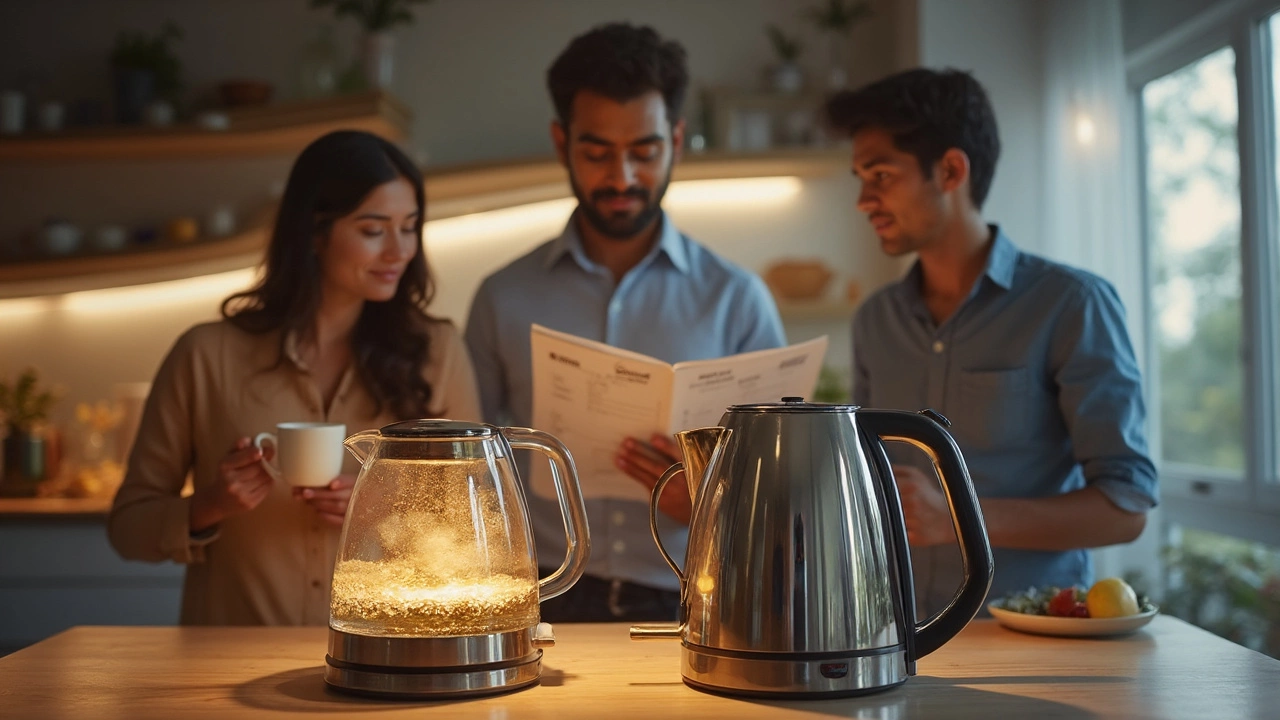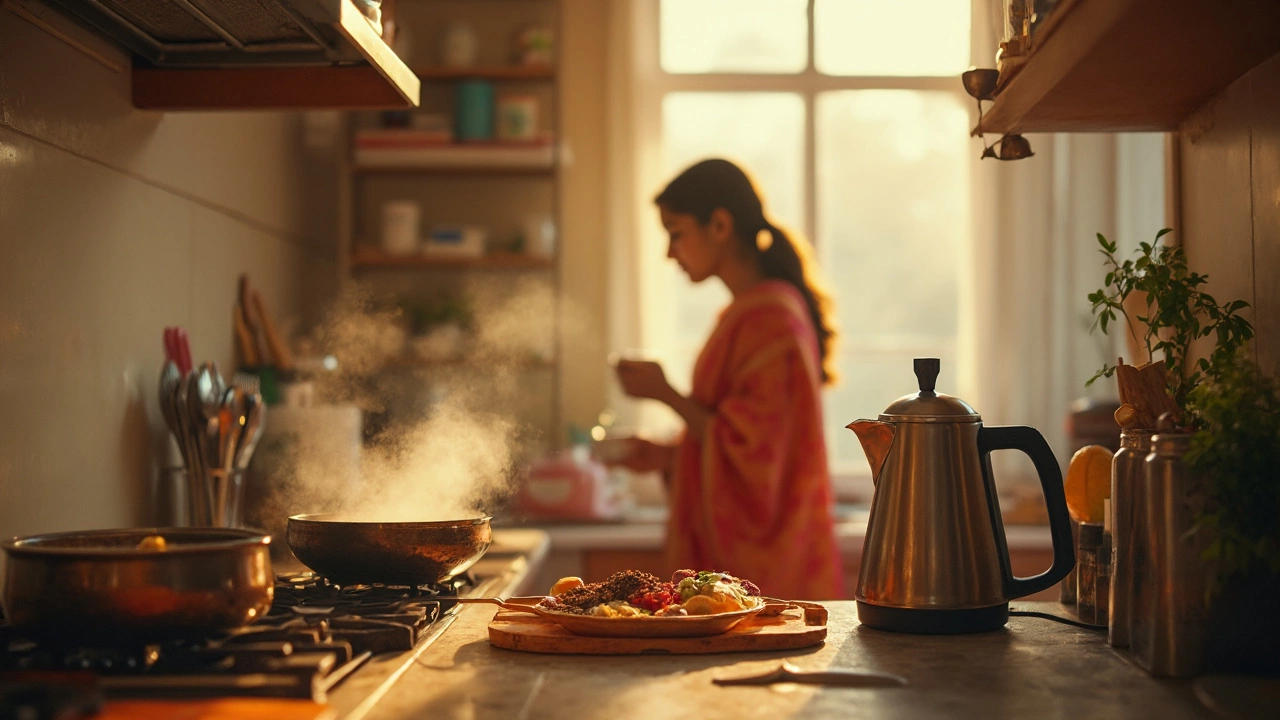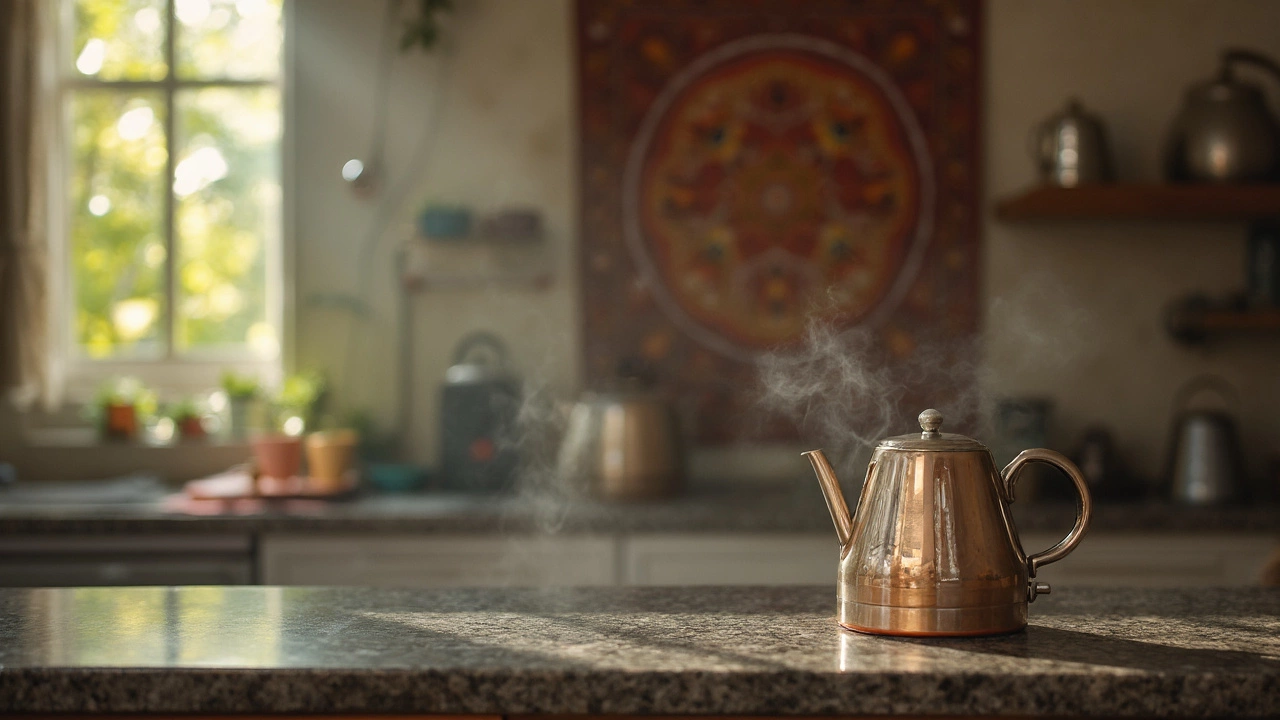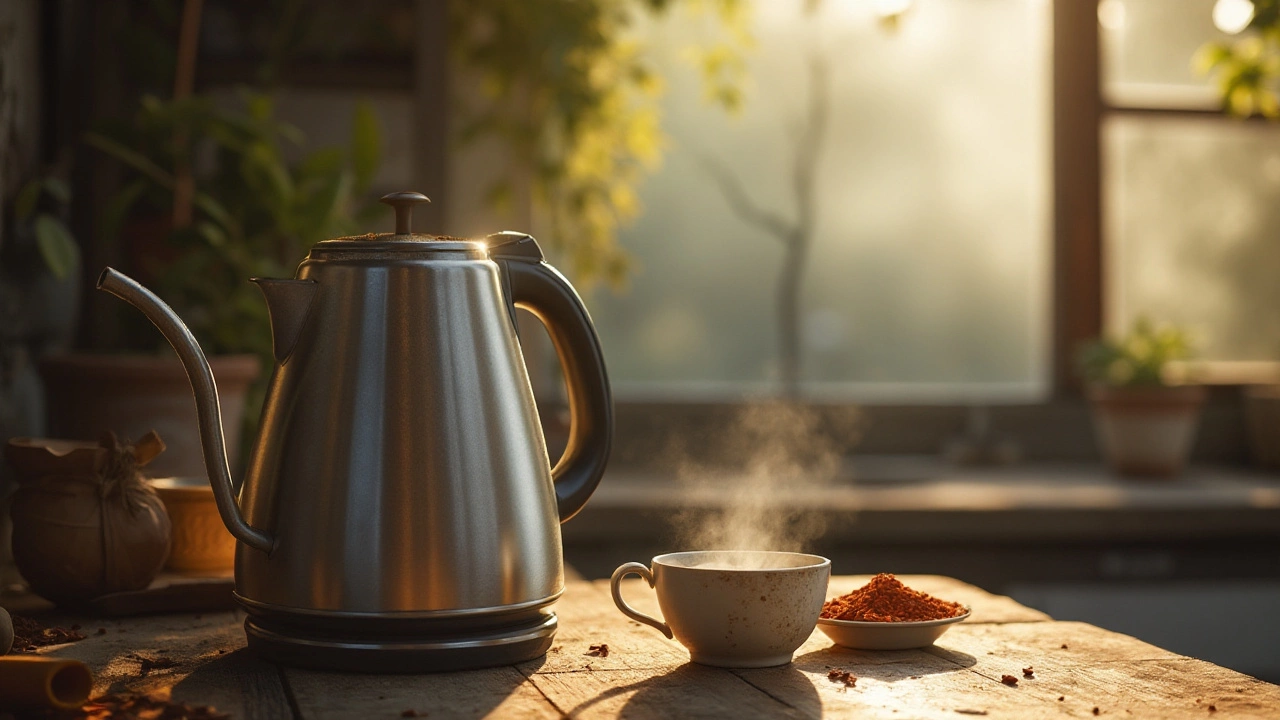Tag: electric kettle

14
May
Boil Water Better: Glass vs Stainless Steel Kettles Compared
Trying to pick between a glass or stainless steel electric kettle? This article breaks down the real-life pros and cons of both. Find out which one’s safer, easier to clean, and if there’s a taste difference you should care about. Plus, get answers on which style fits a busy kitchen or picky taste buds. Get clear, straight-to-the-point advice so you can buy with confidence.

23
Apr
Electric Kettle vs Boiling Water: Which Is Better?
Trying to decide between boiling water on the stove or using an electric kettle? This article breaks down how each method stacks up in speed, energy efficiency, cost, and cleanliness. It shares practical tips and fun facts—like what actually happens when water boils in each method. Get straightforward advice to help you pick the best way to make your next cup of tea or coffee. Perfect for anyone torn between old-school and modern kitchen gadgets.

26
Mar
Electric Kettle Perks: Why They Trump Stovetop Models
Electric kettles offer convenience and safety features that traditional stovetop kettles simply can't match. They heat water faster and come equipped with precise temperature settings ideal for tea enthusiasts. Many models are designed with auto shut-off features, preventing dangerous boil-dry scenarios. They're also energy-efficient, often using less electricity compared to boiling water on a stove, making them a smart choice for the cost-conscious consumer.

16
Feb
Is Drinking Water from an Electric Kettle Safe for You?
Exploring the safety and health implications of drinking water heated in an electric kettle. This article discusses potential risks, benefits, and tips for using your kettle effectively. It provides insights into the materials used and how they can affect water quality. Practical advice is given on choosing the right kettle and maintaining it for safe use.

30
Jan
Is It Harmful to Leave Water in a Stainless Steel Kettle?
Leaving water in your stainless steel kettle might seem harmless, but it can lead to several issues. Stagnant water can cause mineral buildup, affect taste, and pose health risks. This article explores the implications of keeping water in your electric kettle and offers tips to maintain and care for your appliance effectively.